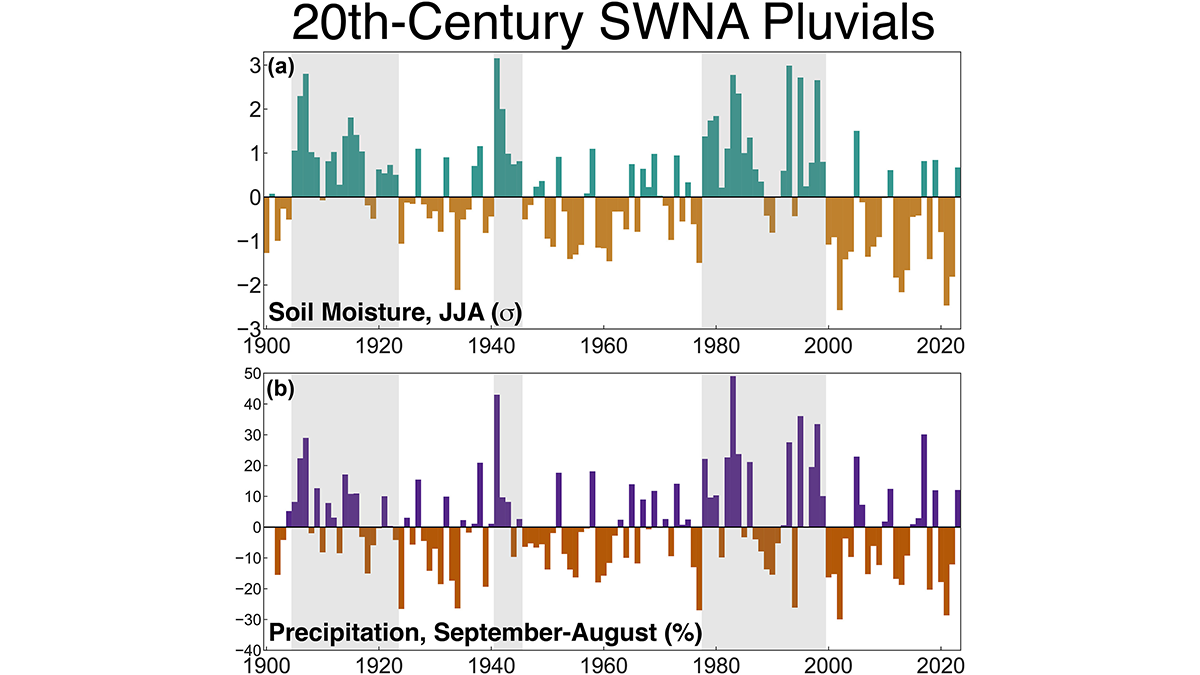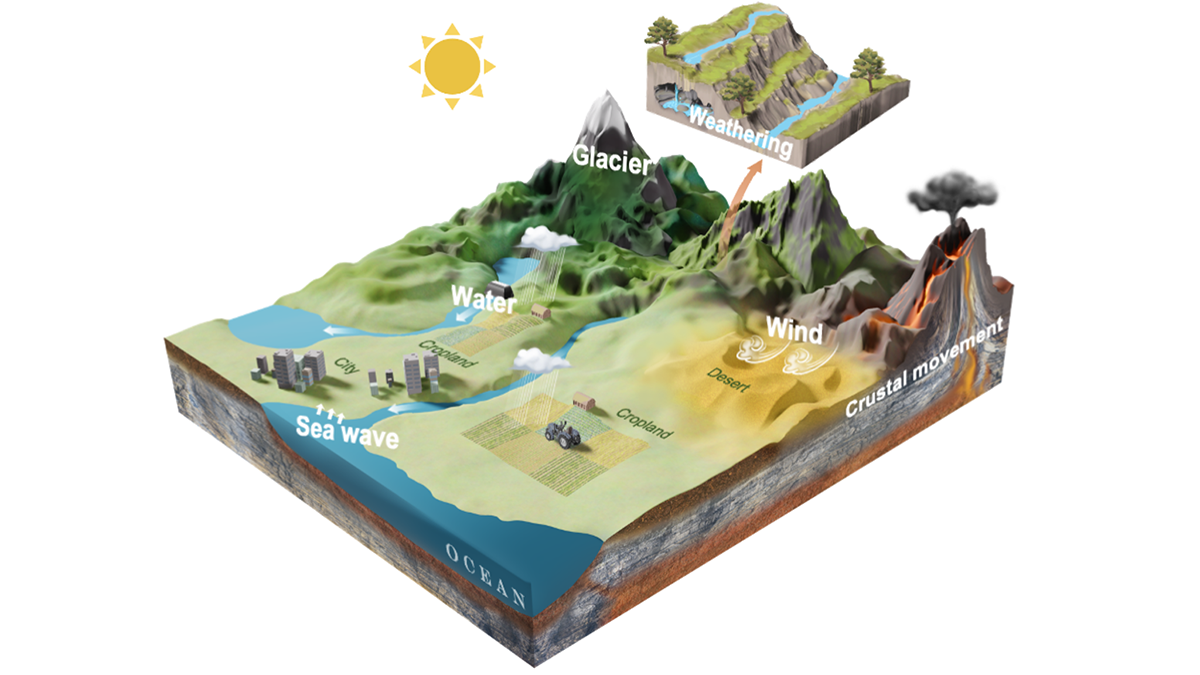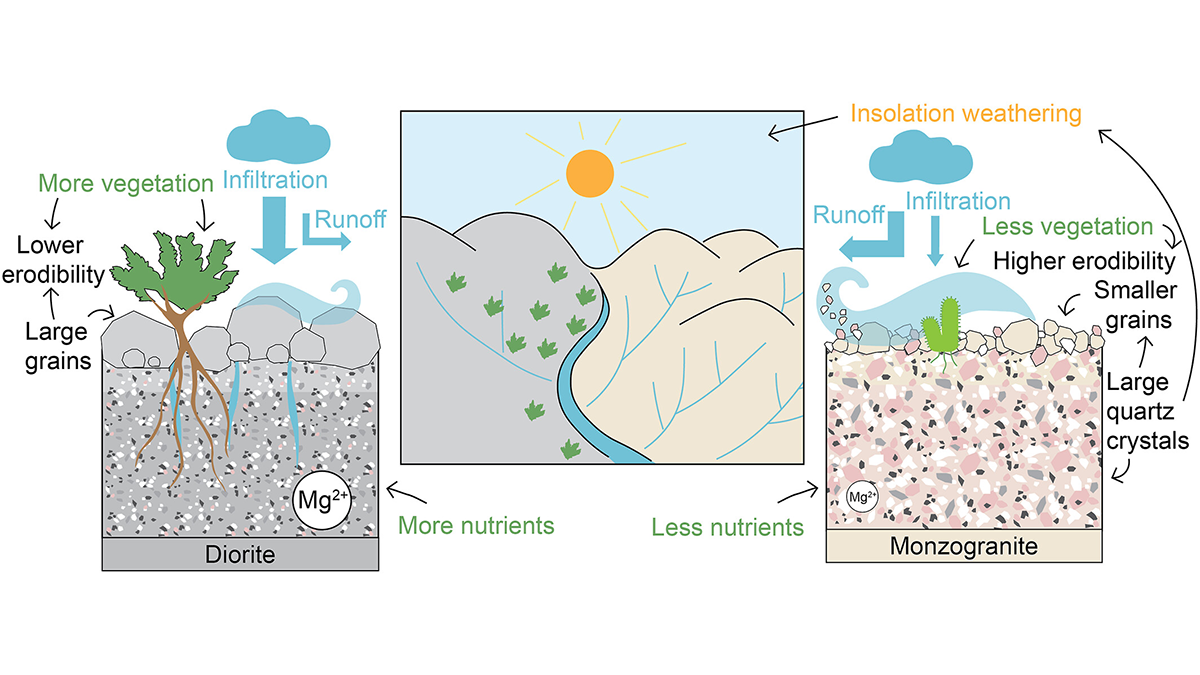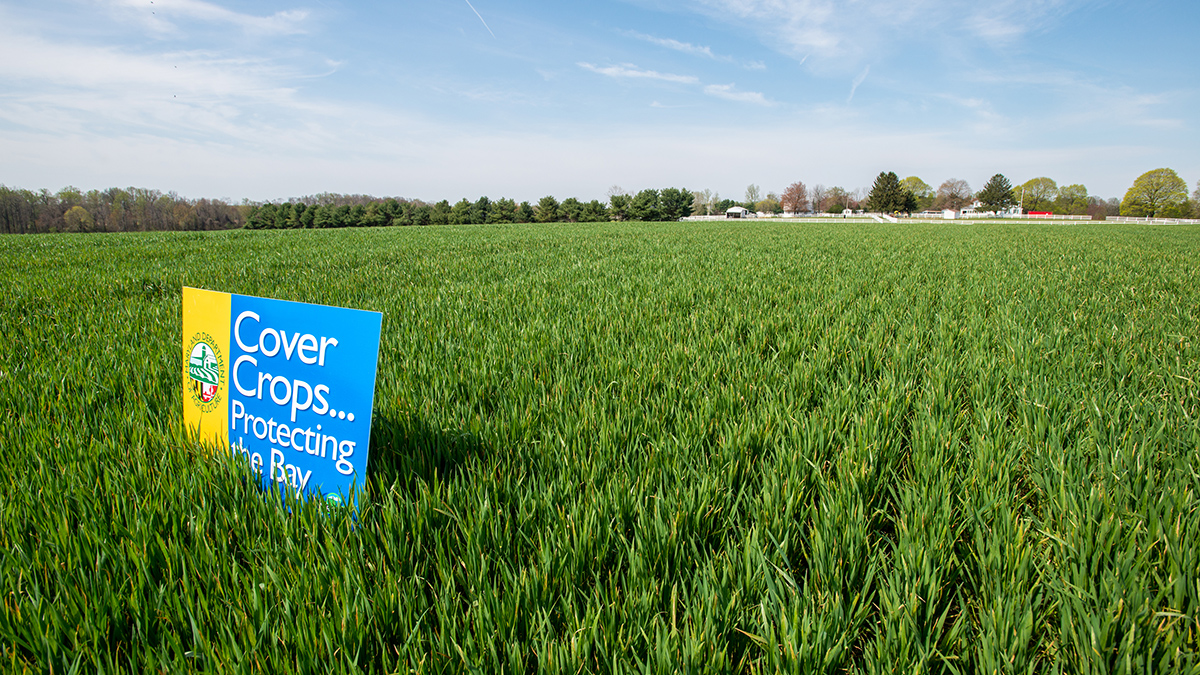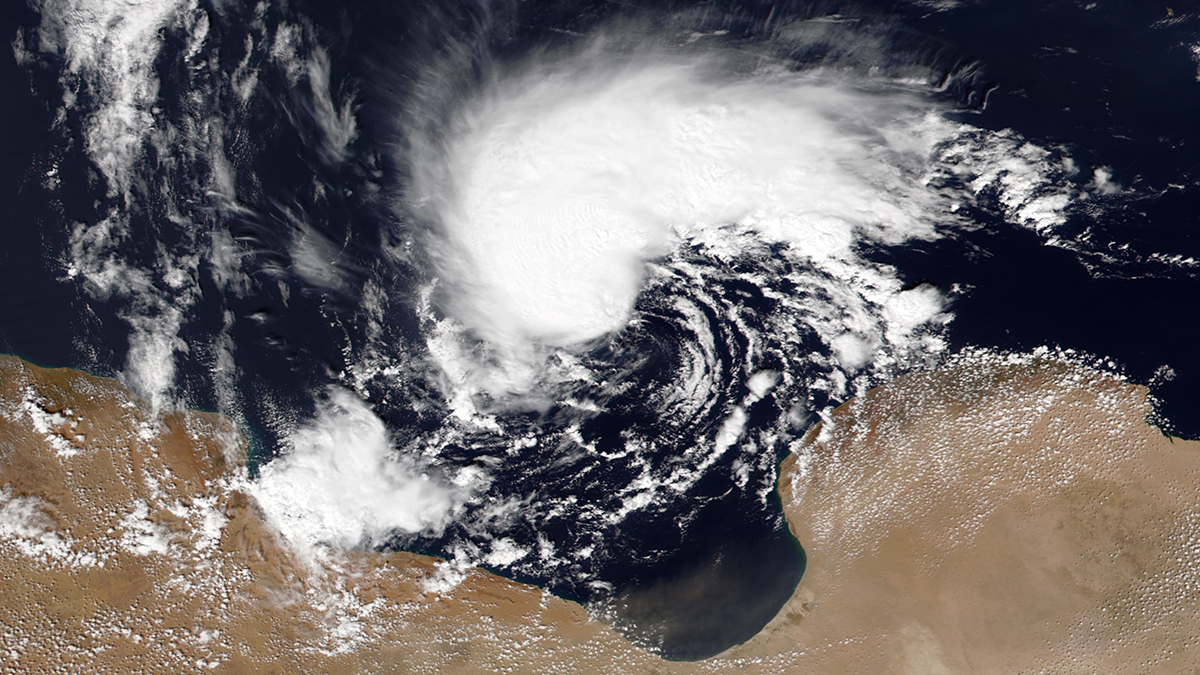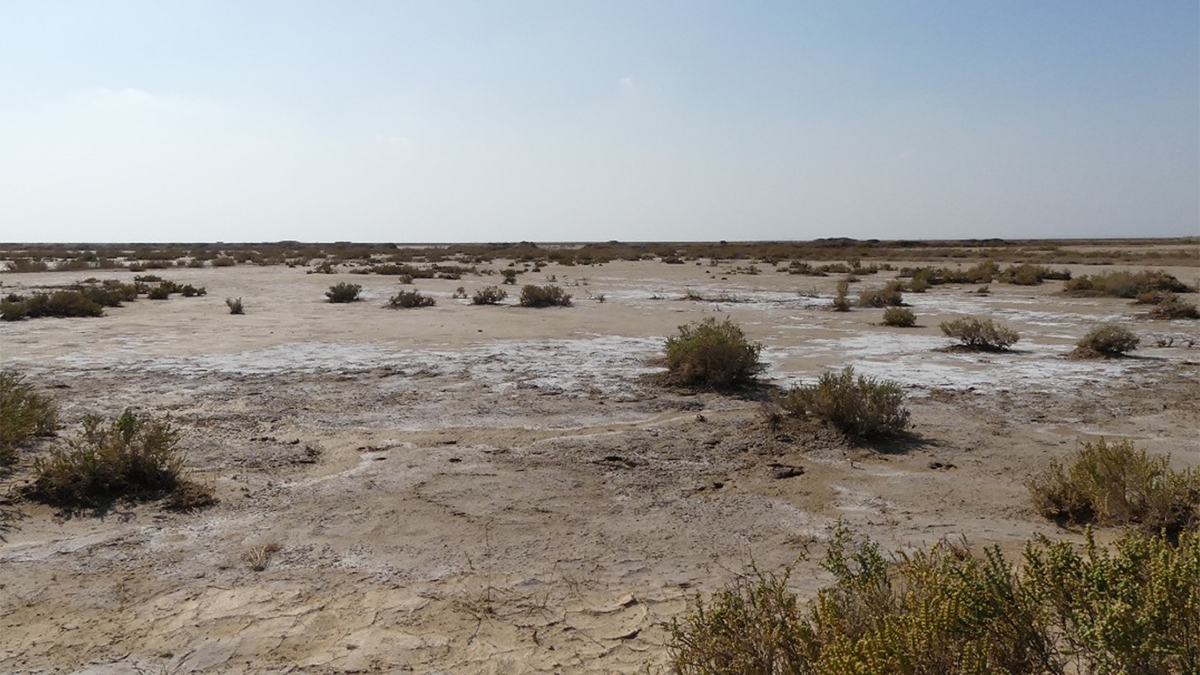A record of soil moisture that extends over one thousand years allows for the investigation of occurrence and causes of modern and historical rainfall-rich periods.
soils
Wildfires Pose a Threat to Volcanic Soils in the Peruvian Andes
Fragile highland ecosystems showed low resilience to fire, which renders them more vulnerable to long-term degradation.
Erosion: An Overlooked Contributor to the Carbon Cycle
Since physical and chemical erosion yield comparable carbon fluxes, studying both together is essential to avoid biases in erosion-driven carbon flux estimates.
How Rock Type Shapes River Networks and Influences Landscape Evolution
A new study in Chile shows how small differences in rock type can drive large differences in erosion, vegetation, and river networks, illuminating the role of mineralogy in shaping landscapes.
Three-Quarters of the World’s Land Is Drying Out, “Redefining Life on Earth”
Climate change has made great swaths of the planet drier and soils saltier, jeopardizing food production and water access for billions.
Cover Cropping May Not Be Cash Crop Panacea
Intended to improve soil health, these crops are also associated with moisture depletion at shallow depths, which significantly impacts cash crop yields in arid regions.
O Legado Rico em Nutrientes nas Terras Pretas da Amazônia
Os solos férteis de terra preta foram criados através de séculos de uso da terra cuidadosamente administrado. Os cientistas estão colhendo referências desses solos para remover o carbono e melhorar o solo para a agricultura.
How Does Subsurface Lithology Speak to Hillslope Morphology?
Subsurface flow hydrology connects soils and bedrock lithology to long-term catchment evolution in humid landscapes.
Torrents of Sediment-Laden Water Worsened Disastrous Libyan Floods
Drought followed by torrential rain can unleash deadly floods in arid regions, like those that affected Libya in 2023.
Soil Salinization: A Rising Threat to Ecosystems and Global Food Security
As soil salinization intensifies, it poses serious threats to ecosystems, soil health, global food security and socio-economic stability.

